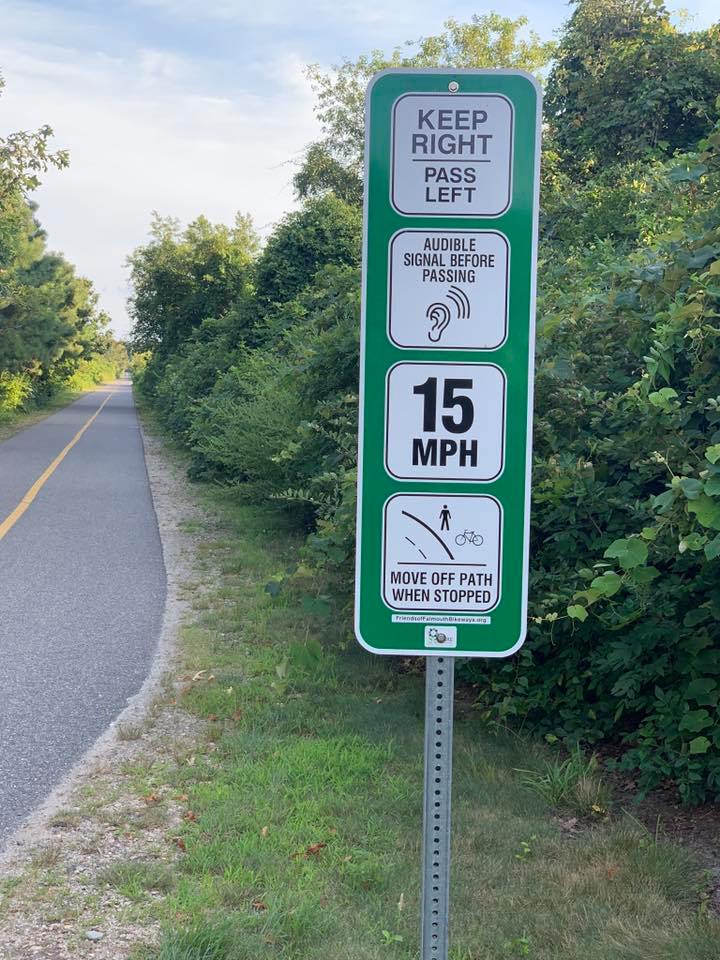
The sign in this photo, which I have copied from a Facebook post, is well-intentioned, but it arouses very mixed feelings in me.
I have no sympathy for people who ride at unsafe speeds around other path users, see https://www.youtube.com/watch?v=SD9u01lVxe8. There was a death on the Minuteman path in Lexington, Massachusetts this year resulting from reckless speed and unsafe passing. But when the path is totally empty as shown in the photo, are people to be prevented from riding at a speed which allows them to get any significant fitness benefit, or getting where they want to go when they want to? This is the Shining Sea Path — line of text at the bottom of the sign says “FriendsofFalmouthbBkeways.org“. The alternative is Woods Hole Road, which is not an attractive ride — hilly, not very wide, lots of motor traffic.
Is the 15 mph speed limit supported by law and so enforceable? The southern section of the Shining Sea path, which this appears to be, is controlled by the Town of Falmouth and I found no ordinance establishing a speed limit on it. The speed limit rule in Mass. General Laws applies only to motor vehicles — https://malegislature.gov/Laws/GeneralLaws/PartI/TitleXIV/Chapter90/Section17.
One other thing in the photo is troubling and senselessly restrictive: the solid yellow line in the middle of the path, indicating no passing (and contradicting the “keep right/pass left” sign). Pedestrians use this path, also bicyclists traveling at various speeds. Passing is unavoidable. A long, straight stretch like the one shown should be a passing zone with a dashed yellow line, or none. See https://mutcd.fhwa.dot.gov/htm/2009/part9/part9c.htm
Audible signal before passing is in the law. Moving off the path when stopped is required for courtesy and also covered, see https://malegislature.gov/Laws/GeneralLaws/PartI/TitleXIV/Chapter85/Section11B . But all of the signs except the speed limit sign are nonstandard, that is, they are regulatory signs not tested for effectiveness or approved for use. Pretending that things are law when they aren’t is not right — warning signs (yellow, diamond-shaped) can convey the same message without raising that issue. Senseless and unenforceable restrictions also are not right. These issues could come up in the event of a crash on the path, and could hold a bicyclist at fault, for example, passing safely when someone darts out into the path and there is a collision. But on the other hand, the Friends of Falmouth Bikeways, a private organization, has no authority to post regulatory signs on a public way. So, is there any?

Leave a Reply
You must be logged in to post a comment.